Ready for a curiosity-rousing trip? From The Odyssey to Rick and Morty, audiences love a wild ride. Let’s tumble into Alice in Wonderland and see what makes it tick.
Key Takeaways
What can we learn from how Alice in Wonderland is told?
- It follows Propp’s folktale structure. Alice breaks the rules and leaves her safe world behind
- It fits the Story Circle too: curiosity is a need that leads Alice into the unknown
- The story keeps moving through constant, dramatic change, building wonder
- In “voyage and return” stories, a simple spark (like chasing something strange) can launch a wild adventure
What is Alice in Wonderland? Behind the Whimsical Adventure
Alice in Wonderland was written by author, poet and mathematician Lewis Carroll (born Charles Lutwidge Dodgson). It was first published in 1865.
The story follows a girl named Alice.
While out with her sister, she spots a talking white rabbit and follows it down a hole. She lands in Wonderland, a strange place full of talking animals, disappearing cats, wild games, and sudden changes.
Overcoming riddles, chaotic encounters and absurd trials, Alice returns to her sister full of stories of her adventures.
Keep reading to grab a free Plottr demo file for Alice in Wonderland. We’ll also explore how it fits “voyage and return” plot structures — available as plot templates in Plottr).

How to Study Plot Structure with Plottr: 4 Steps
Plottr is useful for doing plot analysis, whether you’re studying a book for an English class or editing. Here’s how to go about it:
- Read through. Read the story and summarize as you go. You can also use a resource such as Spark Notes.
- Summarize. Summarize each chapter or scene on a plotline in Plottr. Create a single plotline called “Main Plot.” You could also create a plotline for each narrator in the story.
- Want to track a theme like “Alice vs. Authority”? Add a tag! Then filter scenes fast and stay focused.
- Compare. Got 3 acts or 20 scenes? Use a template with a similar shape or genre. Then line it up and see how your beats stack!
Skip step four if you want. Just laying it out on a timeline helps you spot patterns, plot holes, and big turning points.
Why Compare Stories to Classic Plot Structures?
Comparing a story to popular plot structures will help in several ways, though:
- See where and how stories follow tradition. For example, a “Hero’s Journey” story begins with showing the hero’s ordinary world (before everything changes)
- Note how stories depart from expected plot points or beats. Not all stories fit formulas. In some genres this could be an issue (for example, if you’re writing romance, subcategories often have strict formulas).
- Find and fix plot holes. Maybe a key turning point is missing, or a time jump feels too abrupt. Seeing your story laid out makes it easy to spot gaps and gives you clear next steps to improve it.
Alice in Wonderland Summary
Alice in Wonderland is a classic “voyage and return” tale. A heroine leaves home, faces strange adventures, changes… and returns to her ordinary world.
The book contains twelve chapters. Read a short plot synopsis below. You can also read the full text here, and download the Plottr demo file here.
Chapter 1: Down the Rabbit-Hole
Alice, bored on a day out with her sister, follows a White Rabbit down a rabbit hole. As she falls into a deep well, her curiosity grows.
At the bottom, Alice finds a hall full of locked doors. She spots a garden through a keyhole and wants to get in. She drinks from a bottle labeled “DRINK ME” and shrinks… but now she can’t reach the key. All the strange changes upset her, and she starts to cry.
This starts her journey into a world where nothing makes sense and normal rules don’t apply.
Chapter 2: The Pool of Tears
Alice eats a cake labeled “EAT ME” and grows enormous. When she shrinks again, she cries so much she has to swim through her own tears.
Alice meets a talking mouse and asks how to get out of the pool. The mouse doesn’t reply, so she tries speaking French but it doesn’t help. Eventually, she and the mouse, along with other animals, swim to shore.
Chapter 3: A Caucus-Race and a Long Tale
Alice and the animals are drenched from the Pool of Tears. The mouse tells them a long history lesson which frustrates Alice, and a Dodo suggests a “Caucus-race” to help them dry off.
Everyone runs in different directions, and the Dodo says they all won and should get prizes. Alice gets a thimble from the Dodo and shares her candy with the others, since that’s all she has. Then the mouse leaves.
Chapter 4: The Rabbit Sends in a Little Bill
Alice meets the White Rabbit again who mistakes her for his housekeeper Mary Ann. He sends her to fetch his gloves and a fan, but she drinks something in his house that makes her grow.
Trapped in the White Rabbit’s house, Alice is frustrated by her size and tough situation. The Rabbit and others send a lizard named Bill down the chimney to try get Alice out, but she kicks him, sending him flying up and out of the chimney.
The animals outside throw pebbles at Alice, which turn into cakes as they fall. Alice eats some, remembering how food in Wonderland affected her earlier, and shrinks enough to escape.
Chapter 5: Advice from a Caterpillar
Alice talks with a puzzling Caterpillar who asks who she is and gives strange advice. Tired of growing and shrinking, she learns the mushroom he sits on can help control her size.
After trying pieces of the mushroom, Alice grows taller. She meets a pigeon who mistakes her for a serpent, then finally manages to return to her normal size.
Chapter 6: Pig and Pepper
In this chapter, Alice comes across two footmen, a Fish-Footman and a Frog-Footman. They discuss a Queen’s invitation to a Duchess to play croquet.
After a confusing conversation, Alice enters a chaotic house, where she meets the Duchess, her sneezing baby, and a grinning Cheshire Cat. Alice is worried the baby will be harmed in the chaos of the house. She carries it to safety but it turns into a pig and runs away.
Alice meets the Cheshire Cat again and asks who lives nearby. The Cat tells her about the March Hare and Mad Hatter, then vanishes, leaving only its grin behind.
Chapter 7: A Mad Tea-Party
Alice joins a bizarre tea party with the March Hare, the Hatter, and the Dormouse.
The conversation is full of absurdity. They ask a riddle with no answer and talk about “Time” stopping at six o’clock.
Tired of the rude and silly talk, Alice leaves the tea party. She finds a door in a tree that takes her back to the hall of locked doors. It finally leads to the garden she saw at the start of her journey.
Chapter 8: The Queen’s Croquet-Ground
Alice meets three gardeners painting white roses red to avoid the wrath of the Queen of Hearts.
The Queen arrives with her entourage and Alice hears the Queen shout “Off with their heads!” for the slightest offenses.
A wild croquet game starts, using hedgehogs as balls and flamingos as mallets. Alice chats with the Cheshire Cat, whose floating head annoys the King and Queen.
They argue over how to behead something that doesn’t have a body.
Chapter 9: The Mock Turtle’s Story
Alice meets the Duchess again, who is in a much better mood than at the house earlier, and walks arm-in-arm with Alice.
The Duchess gets deep, talking about love and finding meaning in small things. The Queen shows up, gets angry, and sends her off. Then she invites Alice to meet the Mock Turtle.
Alice meets the Mock Turtle and a Gryphon, who tell her strange stories about life in the sea.
Chapter 10: The Lobster Quadrille
Alice listens as the Mock Turtle and Gryphon explain the Lobster Quadrille, a dance. They show her how it goes and sing a strange little song.
The conversation shifts to wordplay and puns. They ask Alice to recite a poem, but her words get muddled by the chaotic influence of Wonderland. The chapter concludes with the Mock Turtle singing about “Beautiful Soup” before they hurry off to attend a trial.
Chapter 11: Who Stole the Tarts?
Alice goes to the trial of the Knave of Hearts, who’s accused of stealing tarts. The courtroom is full of odd creatures, including a jury of animals and the King as judge.
The Hatter speaks first but gives a nervous, confusing answer. As the trial gets messier, Alice starts growing again. The cook causes more chaos, then Alice is suddenly called to the stand.
Chapter 12: Alice’s Evidence
The scene turns wild, with the Queen shouting for beheadings left and right. Alice stands up to her and says, “You’re nothing but a pack of cards!” As the crowd rushes at her, Alice wakes up. It was all a dream.
The story ends with Alice telling her sister what happened in Wonderland. Her sister sends Alice home and has her own dream (implied to be a daydream rather than sleep).
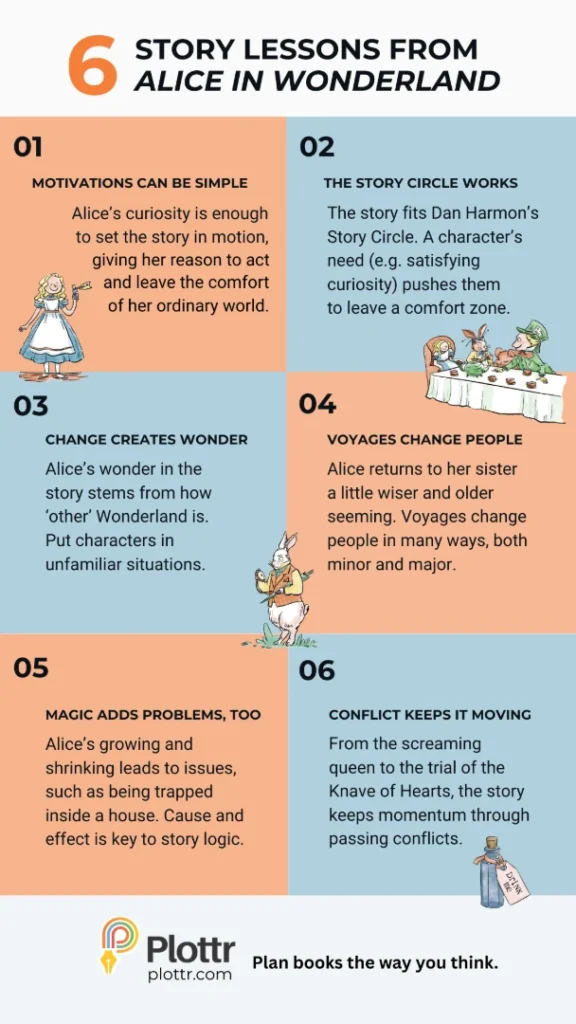
She pictures all the creatures Alice described, Alice when she was little, then Alice when she’s older telling children about her adventures in Wonderland.
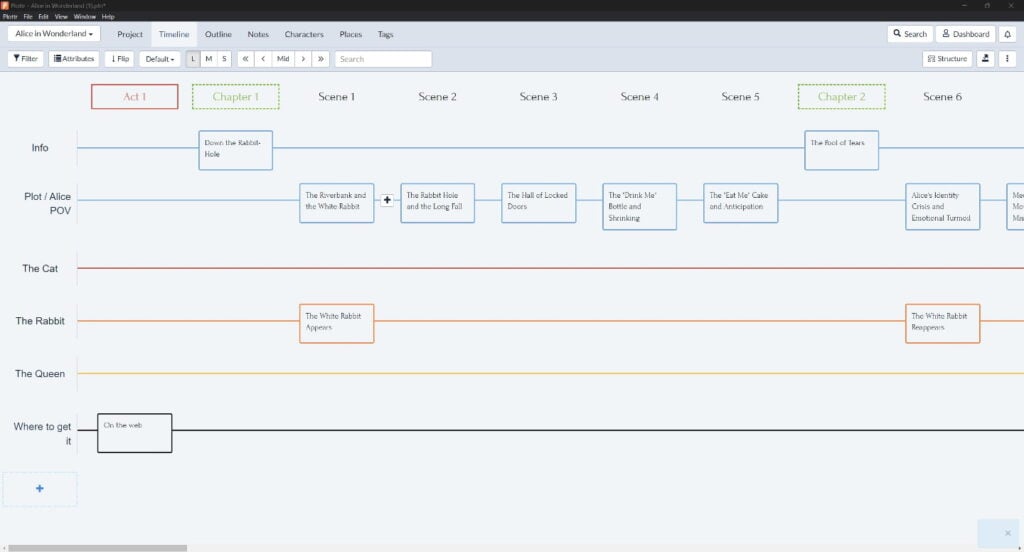
Plot Analysis of Alice in Wonderland
Now that we’ve examined the events of the story, let’s compare it to voyage and return and folktale plot structures in Plottr.
Voyage and Return Story Structures in Plottr
Plot templates that may be interesting for studying and reverse-outlining Alice in Wonderland include:
- Propp Folktale Structure – a plot structure that includes struggles, transfigurations, trials and punishments, story beats similar to Alice’s own journey
- The Story Circle – a plot structure that is a simplified version of The Hero’s Journey developed by Dan Harmon
- The Heroine’s Journey – Gail Carriger’s take on the Hero’s Journey. The Heroine’s Journey places friendship, family and connection above solo triumphs
Alice in Wonderland: Key Elements of Classic Story Structures
Comparing Alice in Wonderland to plot templates in Plottr, you’ll see some beats that match proven plot structures. For example:
Propp Folktale Structure in Alice in Wonderland
The start of Alice in Wonderland has a lot in common with Propp Folktale Structure.
Many folktales begin with what Propp’s translators called “Absentation”: A character leaves their ordinary world and its safety and security.
The start of the story also matches the next few beats of Propp’s folktale structure. These are:
- Interdiction: Alice is never directly told “don’t go,” but it’s clear she’s doing something she shouldn’t. In her world, a proper young girl wouldn’t chase rabbits or wander alone, especially not down holes.
- Violation of Interdiction: A character breaks “The Rules.” Alice also muses aloud that she shouldn’t drink unknown substances as she does in the hall of locked doors
From here, Alice in Wonderland departs from Propp’s Folktale Structure (which usually introduces villains around this point).
It’s interesting how the start of the story follows classic folktale structure so closely.
Alice also features many other beats that fit Propp’s Folktale Structure, including:
- Beginning Counteraction. A hero or heroine seeks magical items to resolve issues (e.g., Alice eating the cakes to escape the house)
- Testing. There are tests and trials, such as Alice facing puzzling riddles from the Cheshire Cat and the Mad Hatter, as well as the trial of the Knave of Hearts
- Guidance. At key moments, Alice gets help finding her way. For example, the Cheshire Cat guides her to the Mad Hatter’s tea party.
- Transfiguration: In Propp’s folktale structure, the hero often changes form or appearance. In Alice in Wonderland, Alice does this often, growing and shrinking
Reading Alice in Wonderland through the Story Circle
Many plot templates in Plottr carry a key note: Not every beat in a template will be necessary (or evident in a given story).
This is why some templates, such as three-act-structure or Freytag’s Pyramid, are useful due to how broadly they apply. Another is Dan Harmon’s Story Circle. Think of it as a streamlined version of the “Hero’s Journey”. The structure gives just eight beats:
- You: A protagonist is in their zone of comfort.
- Need: Introduces something imperfect in the protagonist’s world. They need something.
- Go: The protagonist enters a new or unfamiliar situation or world, driven by their need.
- Search: The character must seek new solutions for situations that are growing increasingly complicated.
- Find: The protagonist finds what they wanted, experiencing fleeting victory. Yet this passes to a more dangerous situation or conflict.
- Take: The protagonist takes what they wanted but this brings serious consequences and a low point.
- Return: The hero or heroine returns to their world with whatever they found, changed and with a new perspective.
- Change: The protagonist has changed, and uses their new abilities, knowledge or perspective.
Putting Alice into the Story Circle Plot Template
Looking at Alice in Wonderland, through this story structure, it goes something like this:
- You: Alice is in the comfort zone of a river bank outing with her sister, but grows bored.
- Need: Alice’s need is to sate her curiosity. She wants wonder and adventure.
- Go: She falls down the rabbit hole, voyaging into a disorienting yet engaging world of nonsense.
- Search: Alice begins searching for a way back to normality, and wants to make sense of Wonderland.
- Find: She finds help and some direction and guidance. These temporary solutions lead to new states of disorientation and intensifying conflicts.
- Take: Alice takes what she wants, be it food or drink to change her size or the baby she wants to keep out of harm’s way. But it never works out quite as she planned. In fact, she ends up in a trial with the Queen of Hearts screaming for her to lose her head. She takes or claims her own power when she stands up to the queen.
- Return: Alice returns from Wonderland, with a sense of having acquired stories to tell. Her need for wonder has been satisfied.
- Change: Alice’s sister reflects on how Alice is growing to become a woman who will tell children her own adventures.
Insights from Analyzing Alice in Wonderland
Studying Alice in Wonderland through plot templates in Plottr reveals:
- Change is key to “Voyage and Return” stories. Alice returns to remind her sister that she won’t be a kid forever. Change is the inevitable outcome of any true adventure, including coming of age.
- Characters’ needs can be simple. Alice’s need is “wonder,” or you might say “satisfying her curiosity.” Yet that is enough to fill a story with surprising twists and absurd, funny characters and situations.
- Broader plot templates fit diverse story scenarios. Although Propp’s Folktale Structure highlights interesting folktale elements in Alice, the Story Circle makes it easier to see the big picture.
What were your insights or takeaways from reading Alice through these plot structures? Share in the comments section below!
Go Down Rabbit Holes and Create Your Own Wonder
Ready to plot, plan and study stories with Plottr? Start now with a free trial.
Alice in Wonderland Q&A
Key themes include: sense vs nonsense, the absurdity of rules, the subjective experience of time, the double-edged rewards and dangers of curiosity, the chaos of tyranny, and growing up.
There’s not a single moral in the story. Yet it provides valuable lessons. Curiosity and imagination empower you to keep growing and changing (in Alice’s case, literally). Adventuring and facing what is ‘other’ is a mirror that will help you know yourself deeper and understand your own context better.
Try these story prompts, inspired by Alice’s adventures down the rabbit hole:
A) Write a story where a character’s hunger to satisfy their curiosity causes a literal or figurative transformation.
B) Imagine a scenario where two siblings’ calm (or intended to be) day out turns into a wild ride. Write that story.
C) Try to imagine an impossibility or paradox. For example, a ship that can only travel by land. Or a world outside our understanding of physics. Explore the idea.
You’ll usually find it shelved with these genres: 19th Century classics, children’s, middle grade, fantasy and adventure. It’s also part of a tradition of ‘nonsense’ stories (like the absurdist poems of Edward Lear).
The Action-Adventure template in Plottr suits voyage-and-return stories. If you want a broader framework, Dan Harmon’s Story Circle divides adventure into eight, simple beats.
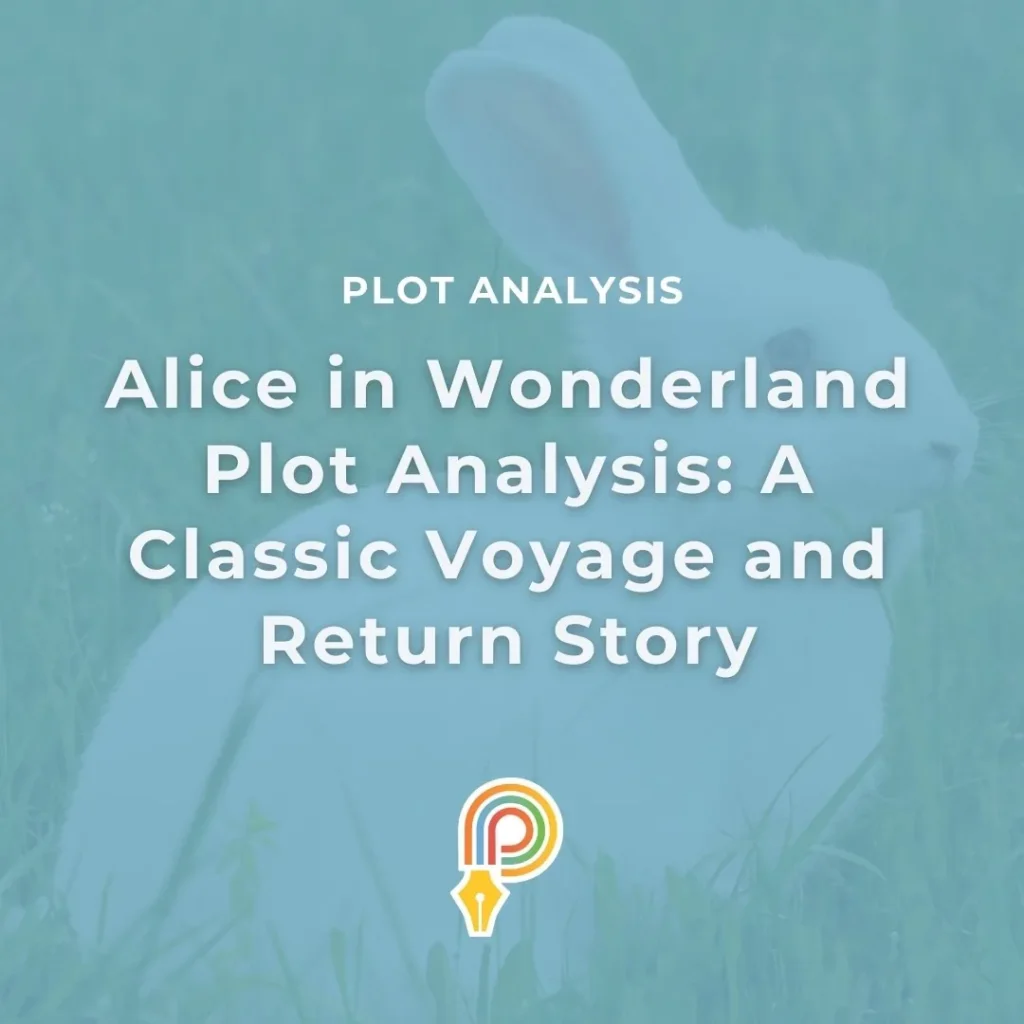

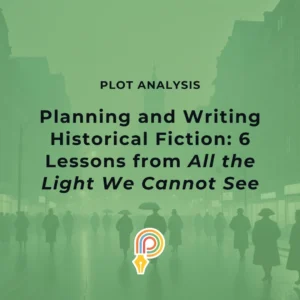
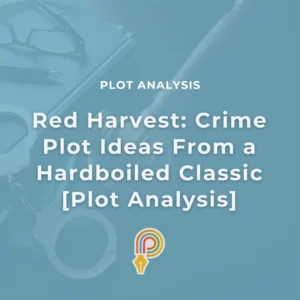
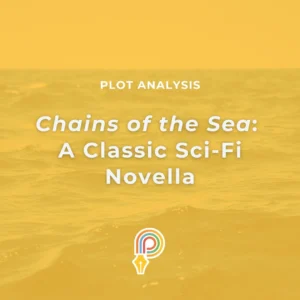

Comments